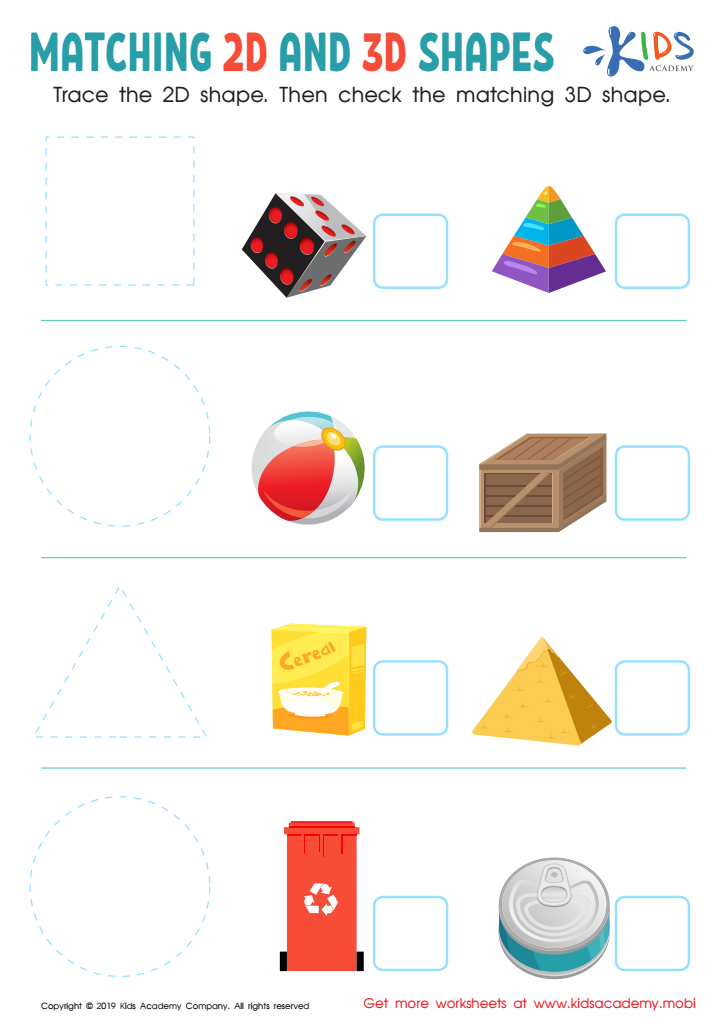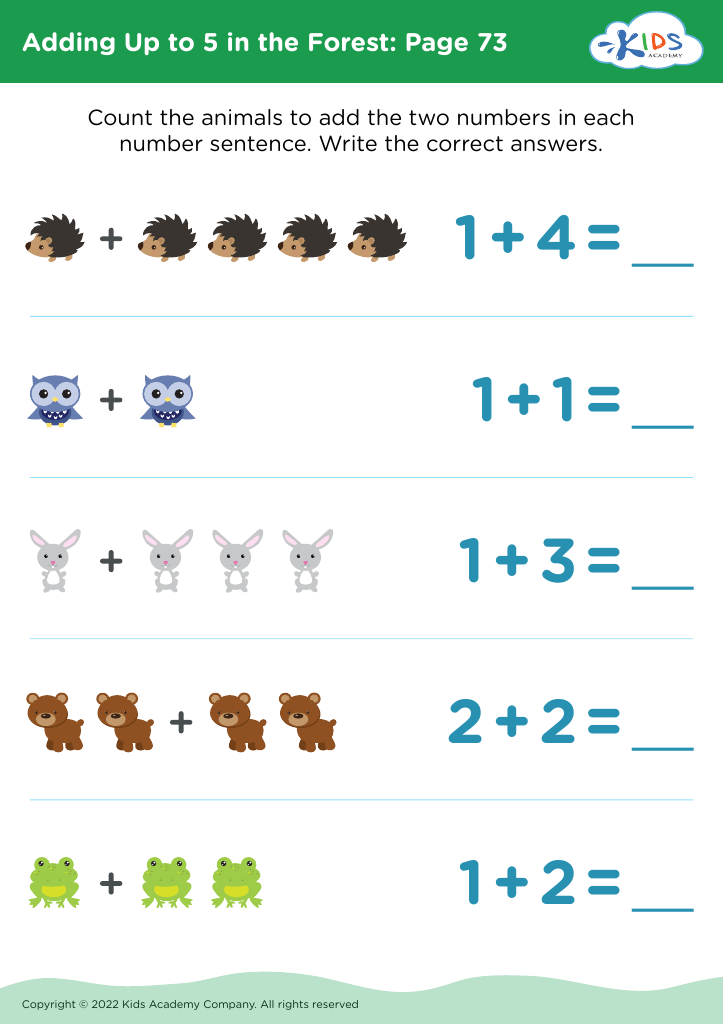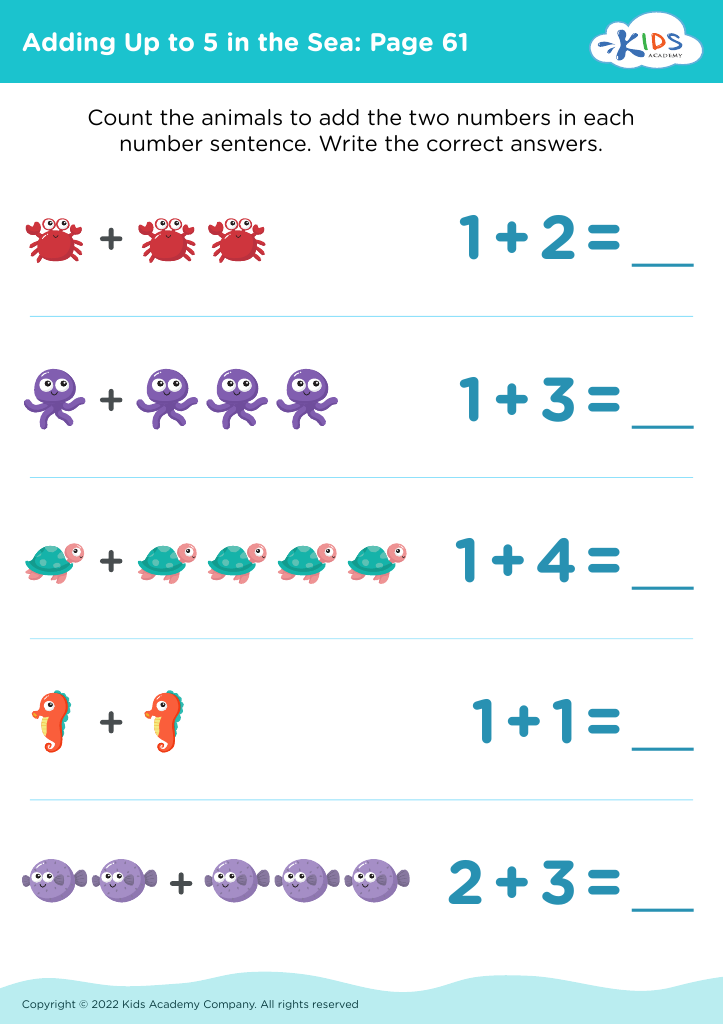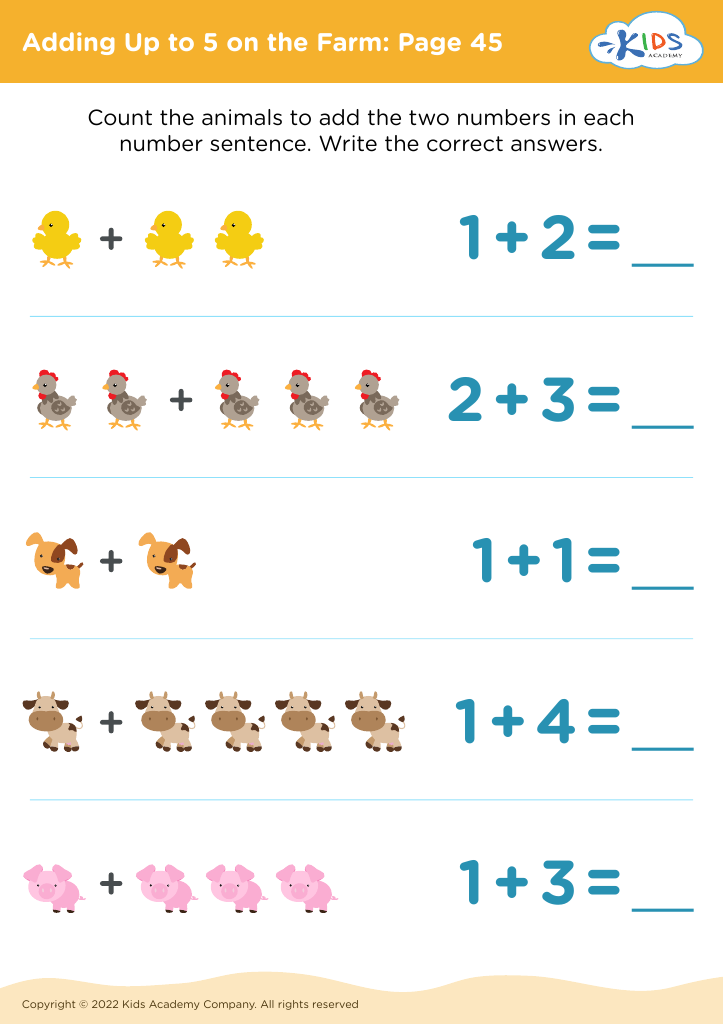Visual-motor skills Math Worksheets for Ages 3-4
4 filtered results
-
From - To
Boost your child's learning journey with our engaging Visual-Motor Skills Math Worksheets designed specifically for ages 3-4! These worksheets seamlessly combine essential math concepts with hands-on activities that enhance children's fine motor skills and hand-eye coordination. Through fun exercises like tracing numbers, connecting dots, and coloring, young learners will develop foundational math skills while improving their dexterity and focus. Perfect for at-home learning or classroom activities, our carefully crafted worksheets stimulate curiosity and encourage a love for math. Help your little ones build confidence and prepare for future learning adventures with our comprehensive collection of visually appealing and educational resources!


Matching 2D and 3D Shapes Worksheet
Visual-motor skills are crucial for young children, especially in the realm of math development for ages 3-4. These skills involve the coordination of visual inputs and motor outputs, enabling children to translate what they see into actions, such as writing, drawing, or manipulating objects. In early math education, visual-motor skills help children understand spatial relationships, shapes, and patterns, all foundational concepts for later math success.
Parents and teachers should prioritize these skills as they lay the groundwork for mathematics learning. Children with strong visual-motor coordination can better engage in hands-on activities that promote critical thinking and problem-solving. For instance, using building blocks or puzzle pieces helps them grasp concepts of symmetry, counting, and organization.
Moreover, fostering visual-motor skills can enhance a child’s confidence and independence. As they gain proficiency in tasks such as sorting or counting objects, their enthusiasm for math will likely increase. Lastly, early intervention in visual-motor development can aid in identifying any potential learning challenges, allowing for timely support. Overall, nurturing these skills contributes significantly to a child’s mathematical readiness and overall cognitive development. Engaging parents and teachers in this process creates a supportive learning environment for critical early learning.



 Assign to My Students
Assign to My Students







.jpg)











